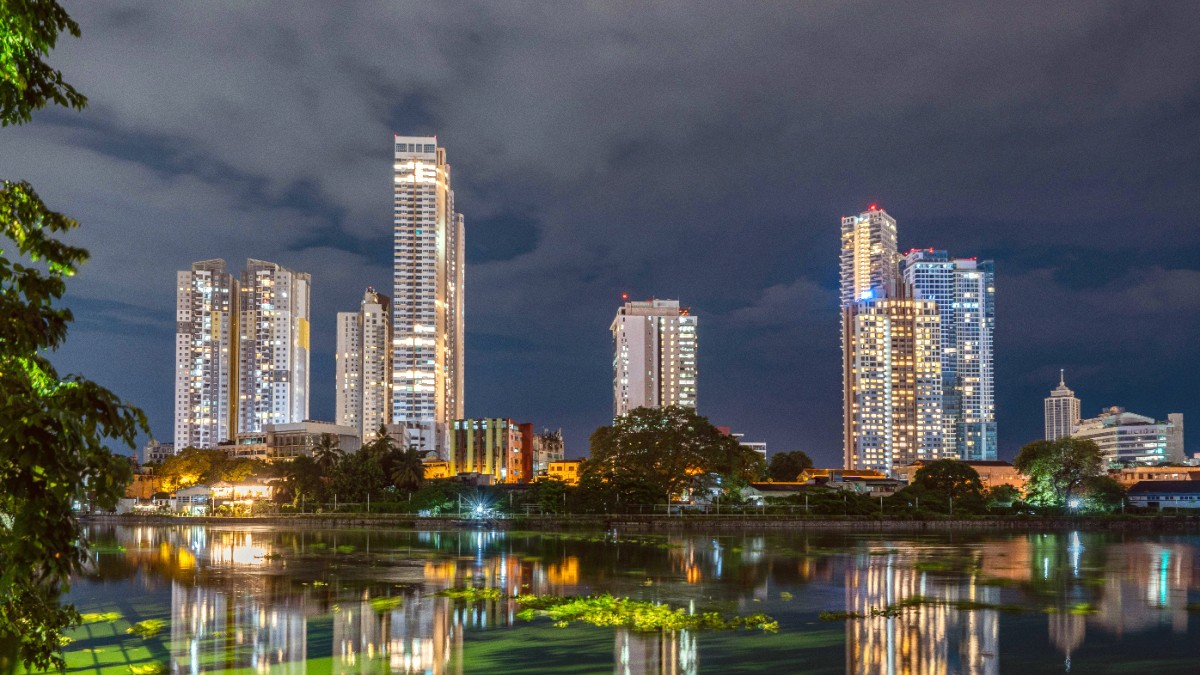
Sri Lanka
Sri Lankan cuisine has centuries of trade and colonial rule shaping it. Portuguese, Dutch, and British influences blend with Indian, Arab, and Malay culinary traditions.
Rice is the staple, served with a variety of curries. Coconut is a fundamental ingredient, used extensively in milk, oil, and grated form. Spices, often freshly ground, form the heart of the flavors.
Coconut milk, rice, a wide array of spices (cinnamon, cardamom, cloves, turmeric, chili, curry leaves), fresh seafood, locally grown vegetables, lentils (dhal), and tropical fruits. Food is bold, aromatic, and often spicy. It balances sweet, sour, salty, and savory notes. Distinctive use of chili, black pepper, and goraka.
Colombo offers a mix of all Sri Lankan cuisines, with a strong influence from Southern Sri Lankan dishes, known for their spiciness and use of fish. The city also offers many international dining options. Areas like Wellawatte have a strong Tamil influence, featuring South Indian and Jaffna-style food.
Generally relaxed. Do not worry too much about strict formalities.
The national dish. A large portion of rice with 4-6 different curries. These are vegetable, meat (chicken, beef, pork), or fish curries. Comes with various sambols and papadums.
Find it everywhere, from simple local cafes to upscale restaurants.
Shredded flatbread (roti) stir-fried on a griddle with finely chopped vegetables, eggs, and often meat (chicken, beef, or seafood). Seasoned with various spices. Popular street food.
Known for the distinctive rhythmic chopping sounds made during its preparation.
Bowl-shaped pancakes from fermented rice flour and coconut milk, crispy edges, soft center. Often with an egg. Steamed rice flour noodles shaped into delicate nests. Typically served with curries and pol sambol.
Common breakfast or dinner item.
Buffalo curd (similar to yogurt) served with Kithul (palm) treacle, a natural sweetener. A simple, healthy, and delicious dessert.
Watalappan is a steamed coconut custard pudding, with jaggery, cardamom, and nutmeg. Bibikkan is a traditional coconut cake, often dense and flavorful.
Numerous upscale restaurants in luxury hotels and as standalone establishments. They offer international cuisine, fusion dishes, and refined Sri Lankan dishes with a modern twist.
A wide selection of family-friendly restaurants, cafes, and specialized eateries. They offer local and international fare (Indian, Chinese, Western, Middle Eastern).
Local Rice & Curry Shops: Often small, unassuming places serving authentic, affordable meals. Street Food Stalls: Abundant around Galle Face Green, Pettah. Bakeries: Serve 'short eats' and fresh bread throughout the day.
While mainly for goods, you will find numerous small food stalls and local eateries within its lanes.
Discover local flavors in a bustling environment.
Near Diyatha Uyana. Features organic produce and healthy food stalls. Operates mainly on weekends, offering a different dining experience.
A good choice for fresh, healthy options.
Diverse regional dishes.
Traditional and fusion dishes.
Pasta, pizza, and grills.
Sushi, kebabs, and more.
Rice and curry is often naturally gluten-free (confirm no wheat flour in thickening agents). Hoppers (rice flour) are naturally gluten-free. Clearly communicate your gluten allergy.
Carry an allergy card translated into Sinhala and Tamil.
Nuts and coconut are common ingredients. Language barriers make explaining complex allergies difficult. Translation apps or pre-written cards in local languages are helpful for communicating with restaurant staff.
Always double-check when ordering if you have severe allergies.
Kosher options are less common. Travelers with strict Kosher dietary needs often plan meals carefully, research specialized restaurants, or consider bringing some of their own certified supplies.
Online forums and traveler communities offer advice on specific restaurants or areas catering to particular dietary needs.
Colombo is famous for its high-end crab restaurants, like Ministry of Crab.
Many modern hotels and buildings feature rooftop bars and restaurants.
Specific sweetmeats like Kavum (oil cakes) and Kokis (crispy fried cookies) are common during Sinhala and Tamil New Year (April).
Beyond Kottu Roti and Wade, look for samosas (savory pastries), various 'short eats' (fried pastries, rolls with savory fillings), and corn on the cob (especially at Galle Face Green).
These are quick, flavorful snacks.
Try a freshly made King Coconut from a street vendor. It is a refreshing and healthy drink, especially on a hot day.
A perfect natural hydrator.
A sour fish curry, a staple of Southern Sri Lankan cuisine. It features a tangy flavor from Goraka (Malabar tamarind). The fish is cooked in a thick, dark sauce until nearly dry.
A mix of rice flour and grated coconut, steamed in a cylindrical form. It often serves with curries, especially coconut milk-based ones.
Savory fried lentil donuts, crispy on the outside and soft inside. Often sold by street vendors, these make for a quick, flavorful snack. Isso Wade (prawn wade) is a popular variation.
Always check restaurant hygiene, especially for street food. Opt for places with high customer turnover.